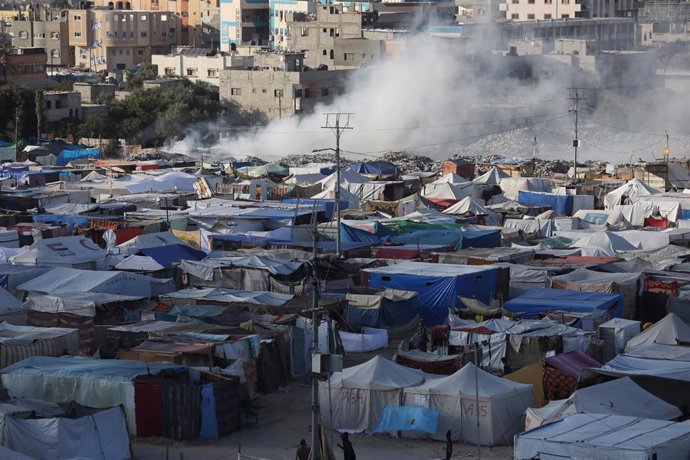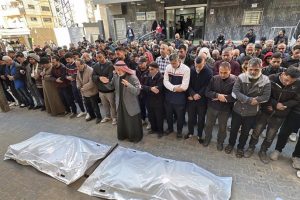Follow the latest news on the war in Gaza live
May 18. (EUROPA PRESS) –
The commissioner general of the United Nations Agency for Palestinian Refugees in the Near East (UNRWA), Philippe Lazzarini, denounced this Saturday that there are already 800,000 Palestinians – almost half of the total population of the Gaza Strip – who have had to flee since last May 6, when the Israeli military incursion on the Rafah region began, in the south of the Palestinian enclave.
“People have left towards the central areas and towards Khan Yunis, where there are numerous destroyed buildings, in response to evacuation orders for people to leave towards the supposed safe areas,” Lazzarini warned in a message published on social network
The head of UNRWA recalled that the population “has been forced to flee on multiple occasions in search of security that they have not found at any time, not even in UNRWA shelters.” “When people move they are exposed, without safe passage or protection,” he said.
Lazzarini believes that every time they are forced to flee, they leave behind part of their belongings: blankets, tents, kitchen utensils and basic supplies “that they cannot carry.” “Every time they have to start from scratch, over and over again,” he denounced.
In the destination areas “there is no water supply or sewage facilities.” As an example, he gives Al Mauasi, an arid farming area of about 14 square kilometers where there are hardly any buildings or roads. “It does not have the minimum conditions to provide emergency humanitarian aid in a safe and dignified manner,” she explained. However, before the current escalation there were more than 400,000 people there. “The area is crowded and cannot absorb more people, as is also the case in Deir al-Balah,” she stressed.
Lazzarini has thus reproached them for urging them to move to “safe” areas or “humanitarian” areas. “It is false. The lives of civilians are increasingly put in serious danger. In Gaza there are no safe areas. There is no safe place. No one is safe,” he warned.
Furthermore, now the situation has worsened due to the closure of land borders, such as the Rafá crossing. “The humanitarian community has no supplies to deliver, no food, no other basic products,” she explained, a situation aggravated for the transportation of supplies due to the imposed fuel embargo.
“The passes must reopen and be safe for access. Without the reopening of these routes, the lack of aid and catastrophic humanitarian conditions will continue to exist,” he stressed.
Lazzarini has finally reiterated the need for an immediate ceasefire. “Any further escalation in fighting will only wreak further havoc on civilians and make it impossible to achieve the peace and stability that Israelis and Palestinians so need and deserve,” he concluded.
Israel has intensified its attacks on Rafah in recent days, in what Israeli Defense Minister Yoav Gallant describes as a “precise operation” against “battalions” of the Islamic Resistance Movement (Hamas). About 1.4 million people were in the city before the intensification of the offensive, most of them displaced from other areas of the enclave.
The offensive against Rafá included the seizure of the Palestinian side of the border crossing with Egypt on May 7, which led to the suspension of humanitarian operations, which has increased international concern about the deepening of the humanitarian crisis in the enclave due to the virtual absence of supplies after more than seven months of conflict.















Add Comment